Let's talk Whippets
Speed, strength and agility sum up the Whippet’s physical characteristics, and when it comes to personality this charming dog has plenty going for them too. Affectionate and gentle Whippets made their name as hunting dogs and nowadays, as well as excelling at sports like racing, they also make lovely family pets. Unsurprisingly, given their reputation for speed and their lean silhouette, they do need owners who can commit to giving them plenty of exercise—as well as plenty of cuddles, though this last part shouldn’t be too hard.
Official name: Whippet
Other names: None
Origins: United Kingdom
Drooling tendencies
1 out of 5Shedding Level
2 out of 5Energy level*
3 out of 5Compatibility with other pets
3 out of 5Warm weather?
4 out of 5Suited to apartment living
5 out of 5Family pet?*
5 out of 5Can stay alone
2 out of 5
| Male | Female |
|---|---|
| Height | Height |
| 44 - 47 cm | 44 - 47 cm |
| Weight | Weight |
| 11 - 18 kg | 11 - 18 kg |
| Life stages | |
|---|---|
| Adult | |
| 10 months to 8 years | |
| Mature | Senior |
| 8 to 12 years | From 12 years |
| Baby | |
| Birth to 2 months | |
Drooling tendencies
1 out of 5Shedding Level
2 out of 5Energy level*
3 out of 5Compatibility with other pets
3 out of 5Warm weather?
4 out of 5Suited to apartment living
5 out of 5Family pet?*
5 out of 5Can stay alone
2 out of 5
| Male | Female |
|---|---|
| Height | Height |
| 44 - 47 cm | 44 - 47 cm |
| Weight | Weight |
| 11 - 18 kg | 11 - 18 kg |
| Life stages | |
|---|---|
| Adult | |
| 10 months to 8 years | |
| Mature | Senior |
| 8 to 12 years | From 12 years |
| Baby | |
| Birth to 2 months | |

Get to know the Whippet
All you need to know about the breed
Whippets are sleek and muscular dogs, often described as looking like Greyhounds, but smaller. As well as the go-faster silhouette, they also share their bigger counterpart’s gentle and affectionate nature. The resemblance is no coincidence: the Whippet breed was developed through cross-breeding between Greyhounds and other fast, long-legged breeds including terriers.
Whippets may be built for speed and activity but when at home, they go into energy saving mode, stretching out and lazing around calmly with their humans until it’s time to play again. They even adapt well to apartment living, provided their exercise needs are met. While Whippets are not known for their barking, they are sociable, family-orientated dogs and if left alone for extended periods they may protest through barking or chewing.
Once trained, Whippets should get on fine with children as well as other dogs (they enjoy playing, after all) but they were bred for hunting and their strong prey drive endures, so they are not suitable pets for households including cats or small animals such as hamsters or guinea pigs.
Anyone who has seen a Whippet run will also understand why that chasing instinct means that if they’re off the lead for exercise, it needs to be in a securely enclosed space. Given the chance they’ll doggedly – and speedily – follow a scent for miles. And we really do mean miles.
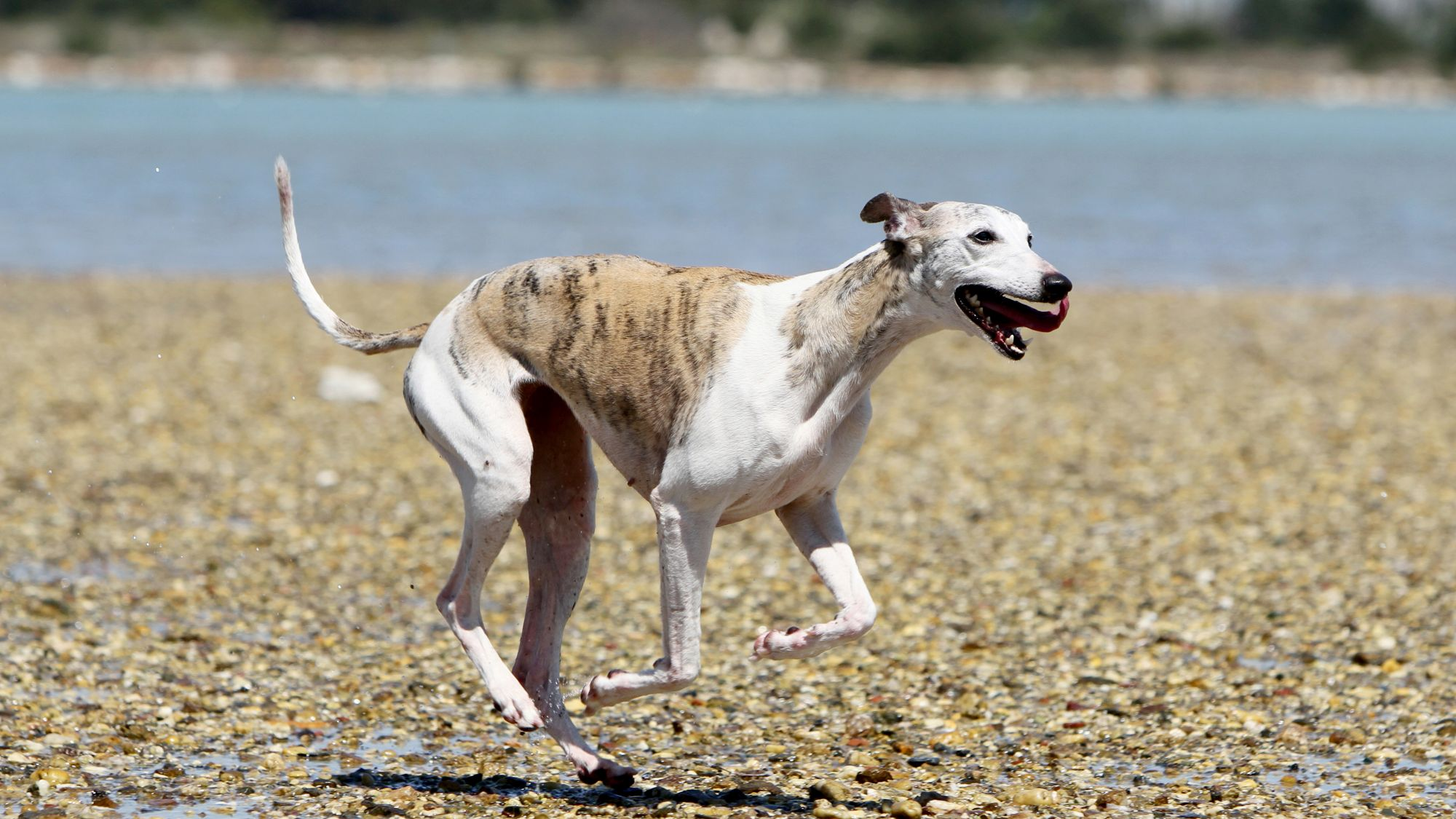
2 facts about Whippets
1. Say whappet?
Mystery surrounds the origins of the Whippet’s name. Theories range from a now obsolete word meaning “move briskly”; a slang word meaning “little cur” (itself a not very flattering description of a dog and famous Shakespearean insult) or “small dog that yelps”.
2. Lightning Rag Dog
In the early days of the breed, when Whippets competed in “rag races”, they earned the nickname “Lightning Rag Dog”, on account of their speed. This lightning-fast canine can run at speeds of up to 35 miles (56 km) per hour. That’s fast enough to break the modern-day speed limit of 30 miles per hour in the Yorkshire and Lancashire villages the breed hails from.
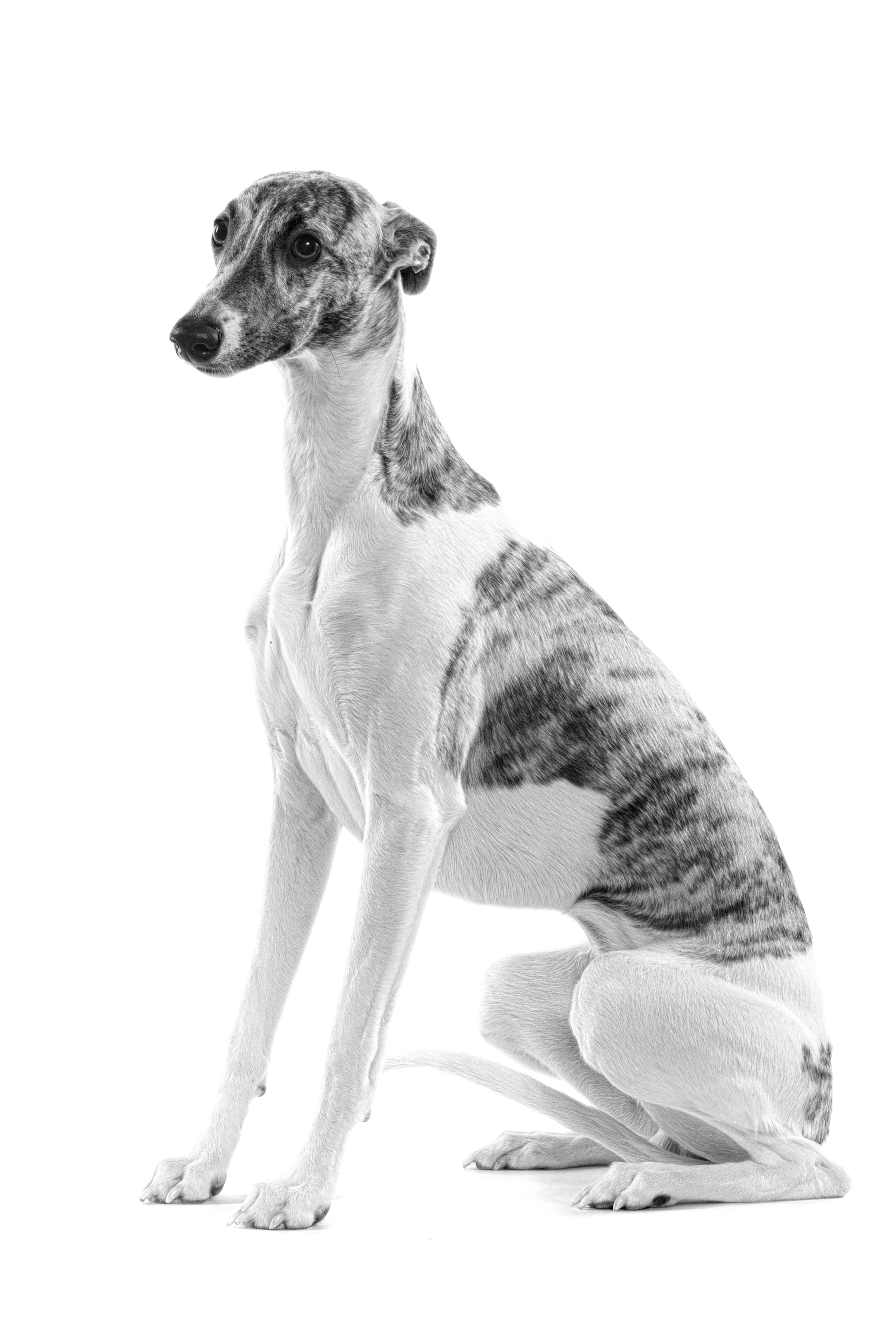
History of the breed
The Whippet breed dates its origins back to the late 18th or early 19th century, in the northern English counties of Yorkshire and Lancashire. Resourceful coal miners and mill workers who enjoyed dog racing and rabbit hunting but found the costs of keeping large dogs such as Greyhounds prohibitive, set out to create their own smaller breed. It was a resounding success.
The crossing of Greyhounds with fast and long-legged breeds – Manchester Terriers and Italian Greyhounds are thought to feature in the Whippet mix – produced a dog that was used for hunting (or in many cases poaching) small animals such as rabbits. They were also put to the test in “rag races” in which the dogs would chase a waving cloth down a long straight course.
The Kennel Club officially recognised the Whippet breed in 1891. The Americans had got there first, however – British workers emigrating to the US brought their dogs with them, and the breed soon became popular stateside. The American Kennel Club had registered the Whippet breed in 1888.
From head to tail
Physical characteristics of Whippets
1.Ears
2.Head
3.Body
4.Tail
5.Coat
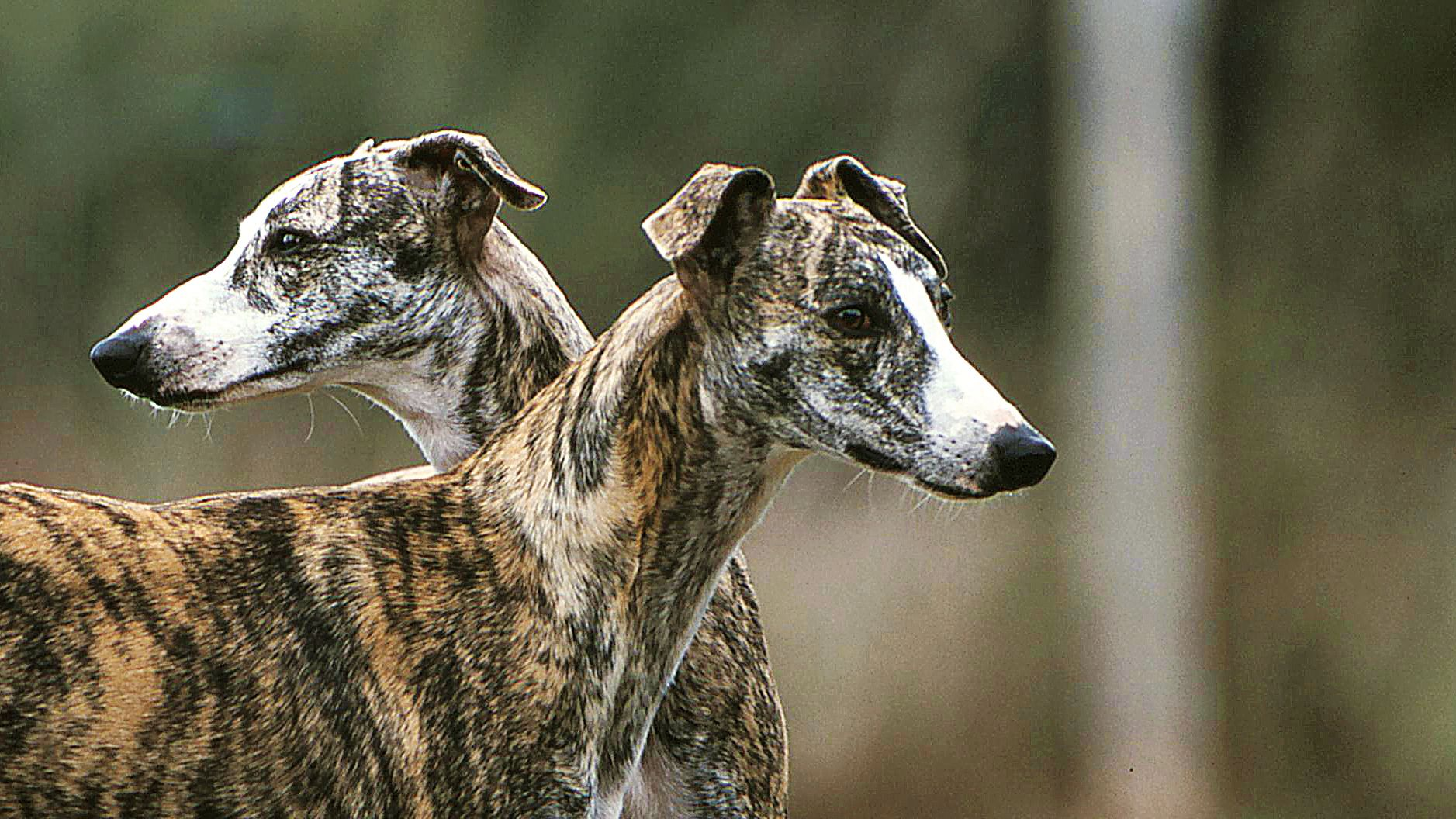
Things to look out for
From specific breed traits to a general health overview, here are some interesting facts about your Whippet
Whippet Weigh-in
A healthy-weight Whippet may appear “skinny” to the untrained eye, or the observer used to more chunky breeds. The fact is, while being overweight can cause health problems for any breed, the slimline Whippet is particularly badly suited to carrying excess weight. Making sure your dog eats the right food – in the right quantities – is vital for their health.
Blood disorder
Whippets are generally a healthy breed but can be prone to a blood disorder called von Willebrand’s disease, which results in symptoms such as nose bleeds or bleeding gums. Although the condition cannot be cured, it can usually be managed, although in some extreme cases it can be severe, even fatal. To make sure this or any other health problem is diagnosed quickly and treated as efficiently as possible, take your dog for regular check-ups with the vet.
Healthy diet, healthier dog
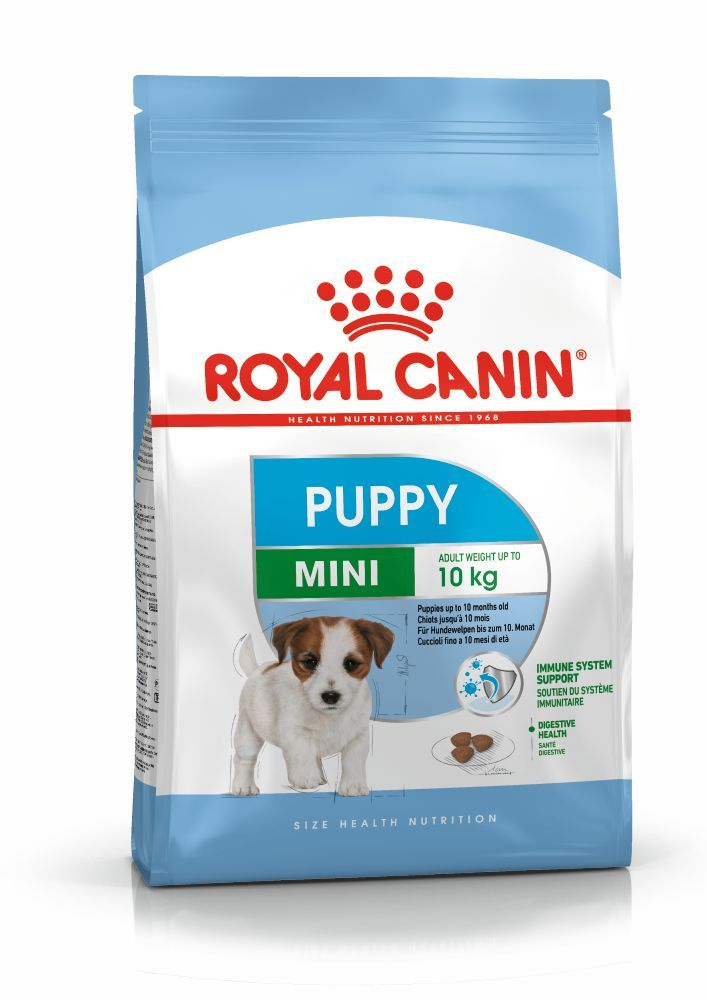
When choosing food for a Whippet, there are many factors to consider: their age, lifestyle, activity level, physiological condition, and health including potential sickness or sensitivities. Food provides energy to cover a dog’s vital functions, and a complete nutritional formula should contain an adjusted balance of nutrients to avoid any deficiency or excess in their diet, both of which could have adverse effects on the dog.
Clean and fresh water should be available at all times to support good urinary regularity. In hot weather and especially when out exercising, bring water along for your dog’s frequent water breaks.
The following recommendations are for healthy animals. If your dog has health problems, please consult your veterinarian who will prescribe an exclusively veterinary diet.
A Whippet puppy’s requirements, in terms of energy, protein, minerals and vitamins, are much greater than those of an adult dog. They need energy and nutrients to maintain their body, but also to grow and build it. Until they are 10 months old, a Whippet puppy’s immune system develops gradually. A complex of antioxidants – including vitamin E – can help support their natural defences during this time of big changes, discoveries, and new encounters. Their digestive functions are different from an adult Whippet’s, too: their digestive system is not mature yet so it’s important to provide highly digestible proteins that will be effectively used. Prebiotics such as fructo-oligosaccharides support digestive health by helping balance the intestinal flora, resulting in good stool.
Similarly, a puppy’s teeth – starting with the milk teeth, or first teeth, then the permanent teeth – are an important factor that needs to be taken into account when choosing the size, form, and hardness of kibble. This intense growth phase also means high energy needs, so the food must have a high energy content (expressed in Kcal/100g of food), while concentrations of all other nutrients will also be higher than normal in a specially formulated growth food. It is recommended to split the daily allowance into three meals until they are six months old, then to switch to two meals per day.
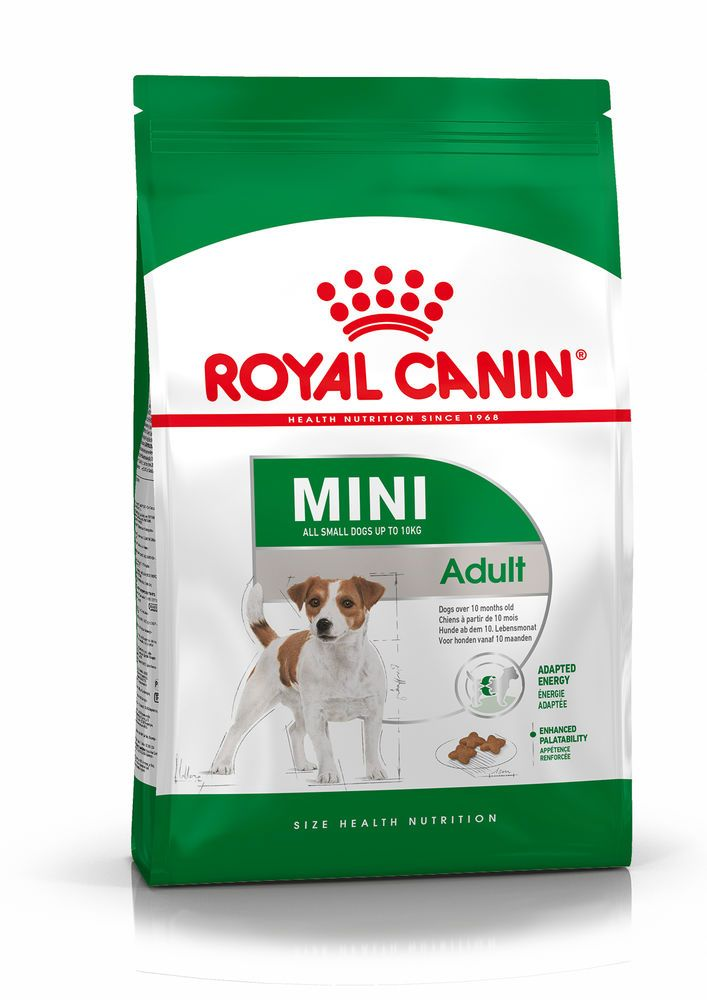
The main nutritional goals for adult Whippets are:
Maintaining an ideal body weight by using highly digestible ingredients and keeping the fat content at a sensible level
Preserving the health and beauty of the skin and coat with the enriched addition of essential fatty acids (especially EPA-DHA), essential amino acids, and B vitamins.
At adult age, small breed dogs are exposed to oral and dental disorders, more precisely, accumulation of dental plaque and tartar. The Whippet’s teeth and jaws need a lot of protection. A kibble shape and a texture designed to promote chewing can help in slowing down the formation of dental plaque, and a formula containing calcium chelators can help reduce tartar formation, hence helping to support daily oral hygiene. Small breed dogs are well known for being fussy eaters. Exclusive formula and flavourings, as well as a kibble size with a special texture, will stimulate their appetite. Small breed dogs are prone to urinary stones; a diet that supports a healthy urinary system is recommended.
For Whippets living mainly indoors, highly digestible proteins, an appropriate fibre content, and very high quality carbohydrate sources will help reduce faecal smell and volume. Because an indoor lifestyle often means less exercise, an adapted calorie content, which meets the reduced energy needs, and a diet that contains L-carnitine, which promotes fat metabolism, can help maintain an ideal weight. It is important to avoid feeding them human foods or fatty snacks. Instead, reward your dog with kibble taken from their daily meal allowance, and strictly follow the feeding guidelines written on the package in order to prevent excessive weight gain.
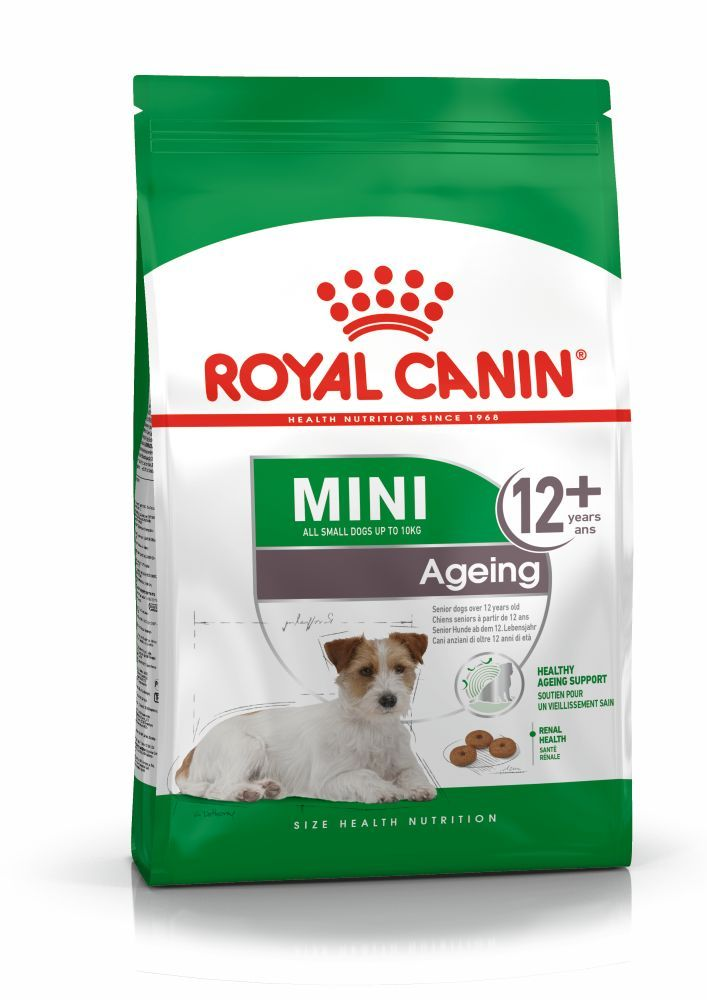
After eight years old, Whippets start facing the first signs of ageing. A formula enriched with antioxidants will help maintain their vitality and an adapted phosphorus content will support their renal system. Ageing is also accompanied by the modification of digestive capacities and particular nutritional requirements, so food for older Whippets should have the following characteristics:
Higher vitamin C and E content. These nutrients have antioxidant properties, helping to protect the body’s cells against the harmful effects of the oxidative stress linked to ageing.
High-quality protein. Contrary to a widely held misconception, lowering the protein content in food brings little benefit in limiting kidney failure. In addition, older dogs are less efficient at using dietary protein than younger dogs. Reducing the phosphorus content is a good way of slowing down the gradual deterioration of kidney function.
A higher proportion of selected trace elements to maintain the skin and coat in good condition.
A higher quantity of polyunsaturated fatty acids to help maintain the quality of the coat. Dogs can normally produce these fatty acids, but ageing can affect this physiological process.
As they age, dogs increasingly suffer from teeth problems. To ensure they continue to eat in sufficient quantities, the shape, size, and hardness of their kibble needs to be tailored to their jaw.
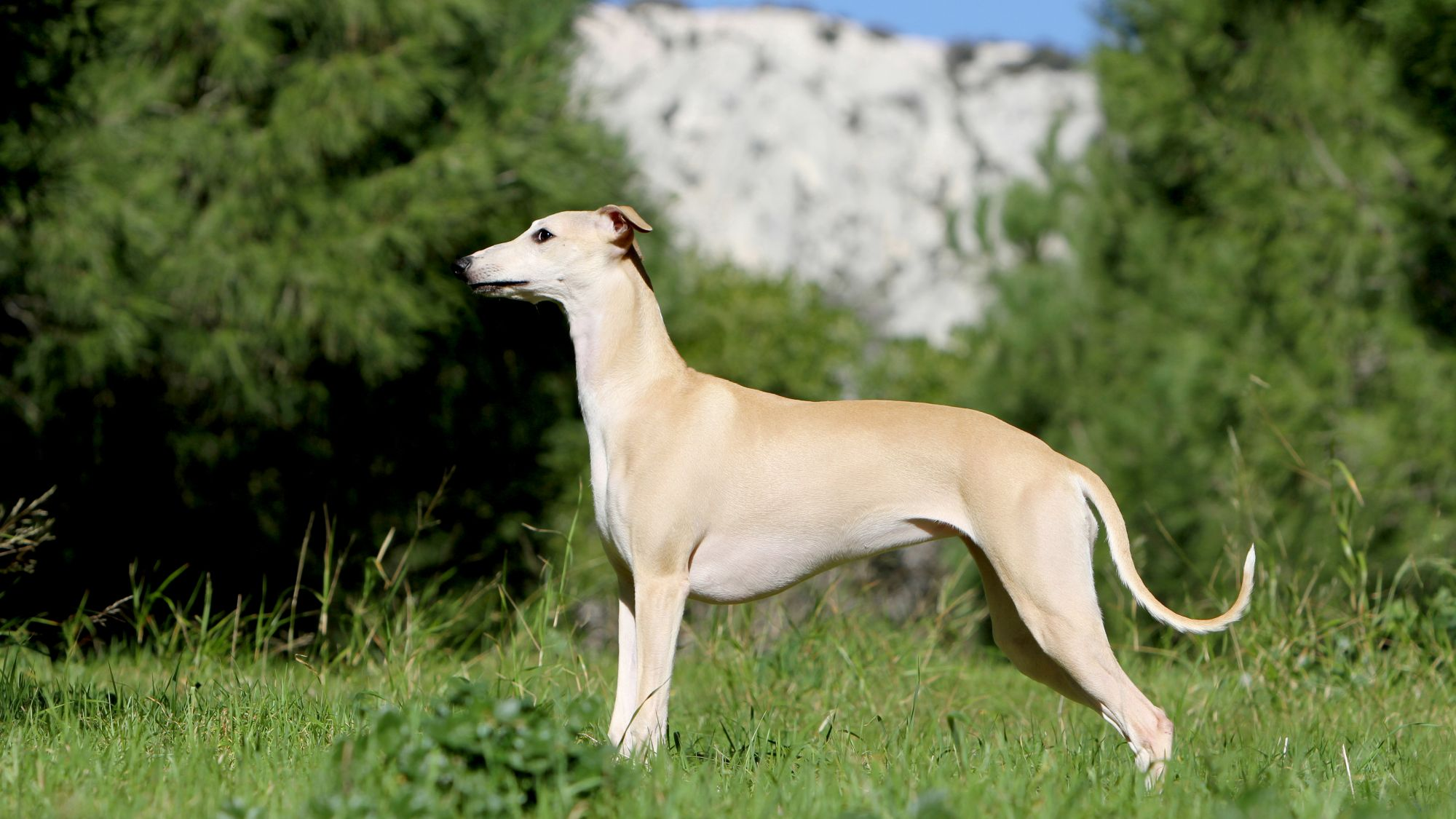
Caring for your Whippet
Grooming, training and exercise tips
7/7
All about Whippets
In a word, no. The Whippet is not a breed known for barking, although they may make some noise if they’re left alone for long periods. If you’re after a guard dog, this is probably not the breed for you. If it’s an affectionate and gentle pet you’re after, the Whippet is an excellent choice.
Whippets are not the most gregarious breed of dogs – they can be wary of people they don’t know (although early socialisation can help with this) – but the good news for would-be owners is they are known to be cuddly and affectionate with their own humans. Once trained, they get on well with children.
Suggested Breeds
Read more on this topic
Sources
- Veterinary Centers of America https://vcahospitals.com/;
- Royal Canin Dog Encyclopaedia. Ed 2010 and 2020
- Banfield Pet Hospital https://www.banfield.com/
- Royal Canin BHN Product Book
- American Kennel Club https://www.akc.org/
Like & share this page